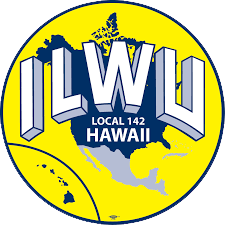AN INJURY TO ONE IS AN INJURY TO ALL
451 Atkinson Dr Honolulu, HI 96814
We'd like to hear from you.
Phone line
Mon to Fri 8:00am-4:00pm
Working hours
451 Atkinson Dr
Honolulu, HI 96814
Honolulu, HI 96814
Visit us
THE 1946 SUGAR STRIKE
The 1946 Sugar Strike was more than a labor-management dispute, it was a turning point in the social and economic revolution that would transform Hawaii from an almost feudal plantation society to a modern, democratic state. Hawaii’s 28,000 sugar workers were struggling to bring dignity and fairness to their working lives by organizing into a union, the International Longshoremen’s and Warehousemen’s Union (ILWU) Local 142. Their successful organization would change the course of Hawaii’s history.
In 1946, Hawaii was dominated by a privately owned plantation system where over 100,000 people, one-fifth of the population, lived and worked. The plantations and nearly every other major economic activity in Hawaii was controlled by five companies, which in turn were controlled by a few wealthy families through a network of intermarriages and stock ownership.
While the plantation owners reaped fabulous wealth from the $160 million annual sugar and pineapple crop, workers earned 24 cents an hour. The plantations devised a system of labor control after ruthlessly breaking attempts by three generations of sugar workers to improve their wages and conditions. The plantations learned to divide workers by recruiting different nationalities and housing them in separate plantation camps. Workers were kept on the plantations through wages and by creating a dependency on plantation controlled stores, housing, medical clinics, and social facilities.
The sugar workers also learned lessons from the past. The union organization brought workers together and called on each individual to share their skills, talent, and energy for the good of the whole.
The union united the different ethnic groups by actively fighting racial discrimination and recruiting leaders from each group. Members were kept informed and involved through a democratic union structure that reached into every plantation gang and plantation camp. Every member had a job to do, whether it was walking the picket line, gathering food, growing vegetables, cooking for the communal soup kitchens, printing news bulletins, or working on any of a dozen strike committees.
In the course of winning their strike, sugar workers received a crash education in organization, leadership, political economy, and civics. The power of unionization and this new found knowledge changed the lives of 28,000 sugar workers and their 47,000 family members. A year later, the struggle spread to involve 20,000 pineapple workers and thousands of their family members. The union movement had spread too far and too wide to ever be contained again. The plantation stranglehold on Hawaii’s economy and social life was ended, and this opened the way for Hawaii to develop into a modern, democratic society.
THE 1946 SUGAR STRIKE